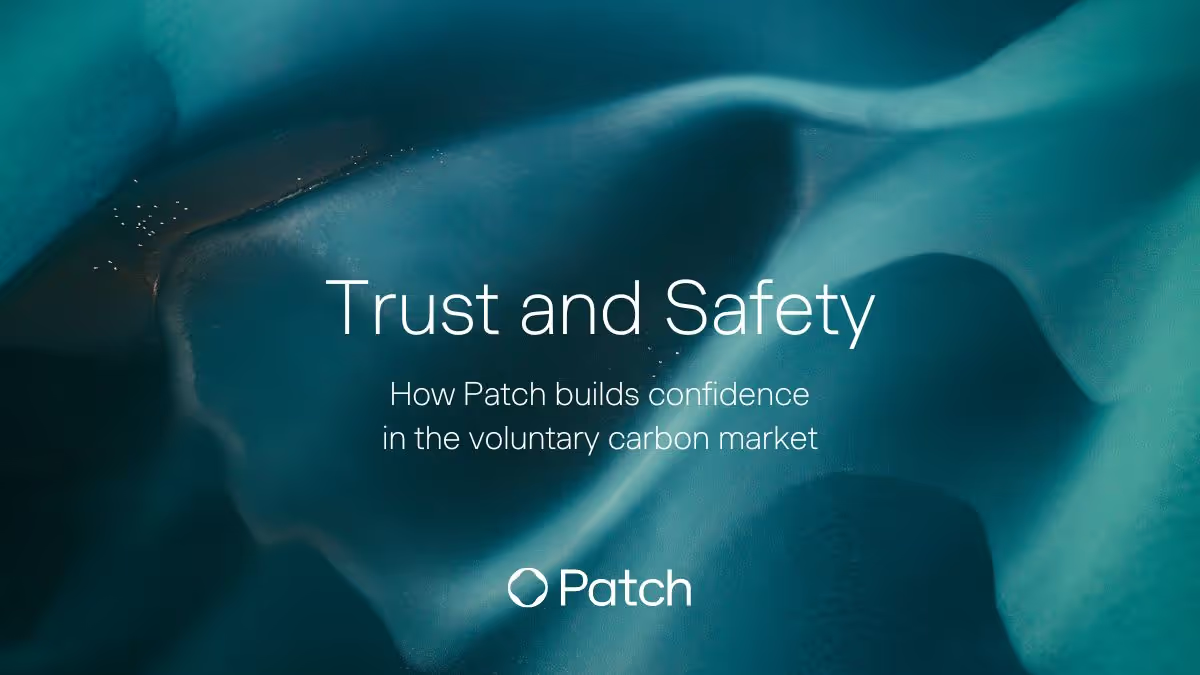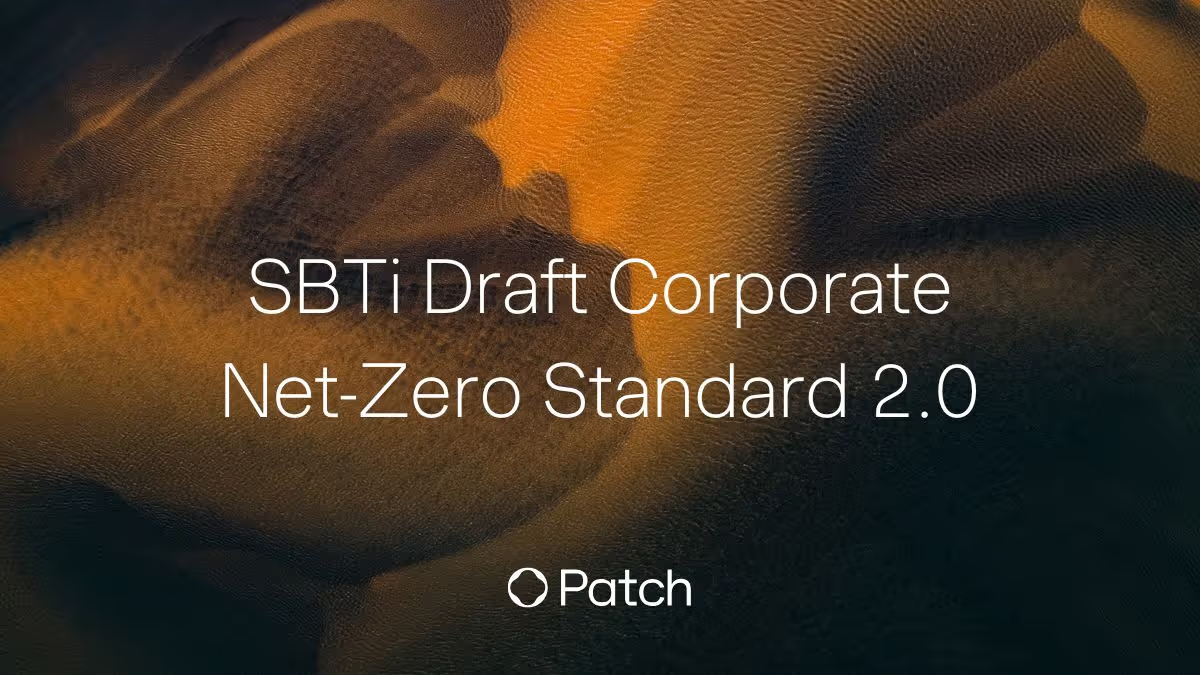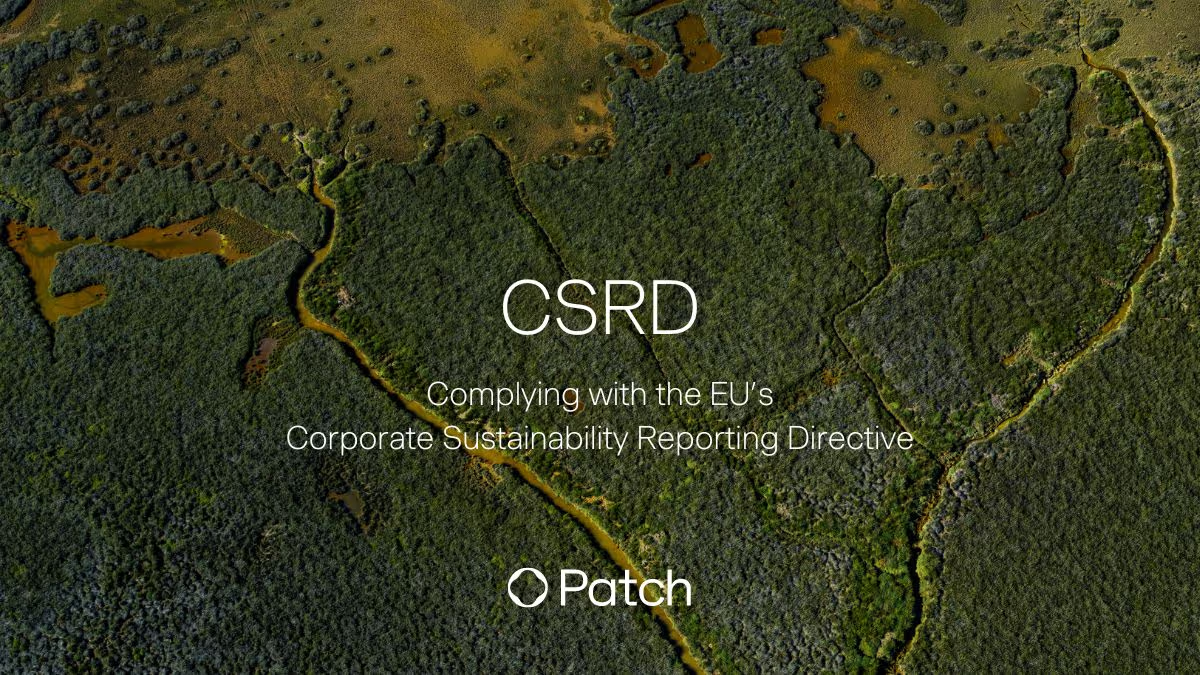Patch is creating infrastructure for the carbon market of the future.
If that future is to be a healthy market that efficiently channels capital toward effective climate solutions, it’s got to be built on a foundation that inspires confidence in the companies using it.
All market participants — from the companies creating the standards to the verification and validation bodies to the credit suppliers and everyone in between — need to incorporate trust and safety into the fabric of the market. When that foundation is laid, suppliers can deliver high-integrity carbon credits, and buyers can deliver capital at the rate and scale required to rebalance the planet.
That’s been our approach since day one back in 2020 when Patch was founded. Today, we’re releasing a whitepaper that contains the most current iteration of our trust and safety methodology, including how we vet and accept projects.
This whitepaper goes into deeper detail of our approach than ever before. It’s designed to help us scale up and speed up our vetting process, so suppliers can know exactly what to expect before applying, and buyers can scrutinize our requirements with complete transparency.
Why VCM risk is different than other market risk
Our philosophy on trust and safety informs every decision we make at Patch — from which projects we accept or reject to every line of code in our platform.
In this philosophy, it’s not enough to simply de-risk transactions. And at any rate, that can never be fully accomplished in any market — the VCM is no exception. Mature markets have guardrails put in place by governments, regulators, standards bodies, participants, and often built into their infrastructure.
Carbon markets, however, are less mature compared to traditional markets. There’s currently no common agreement among governments and regulators, and existing standards aren’t universal or comprehensive — yet.
Also unlike traditional markets, the VCM has a second type of risk that typical guardrails may not prevent: the risk of inaction.
As an example, one way to mitigate buyer risk would be to create thresholds for projects that are so stringent, only the ones perceived to be the lowest-risk (based on current science) pass the bar. But this would mean some projects — such as early-stage novel technologies — won’t get the funding they need to iterate and prove out their method at scale. Or, in the case of forestry projects, where monitoring techniques are still being improved, we'd risk losing thousands of hectares of indispensable forests in the meantime.

For carbon markets, the problem of risk actually has two parts:
Risk to the buyer: Risk that your carbon credit doesn’t deliver on its promise.
Risk to the planet: Risk that we don’t scale climate solutions quickly enough to meet global targets.
The global scientific community doesn’t yet know which approaches will ultimately be the most effective in fighting climate change. Investing in a wide and diverse variety of methods will have the best chance of success. Moreover, as the Oxford Principles show, some project types will be critical early on, but will decrease in importance over time. Others will ramp up in importance as they scale. As such, there’s risk in creating a system that unduly restricts money from entering the market.
Optimal trust and safety standards must minimize risk to the buyer while also maximizing the flow of funding toward as many climate solutions as possible.
The main place this twofold approach to risk manifests itself is in our project acceptance criteria, laid out in deep detail in our trust and safety whitepaper.
A layered approach to trust and safety
Another way Patch is able to simultaneously increase buyer access to credits while also raising the bar for credit integrity is that our approach to trust and safety doesn’t end at project acceptance criteria. Patch has multiple types of redundant protection against buyer risk in the VCM.
As COVID-19 risk became better-understood, one model of protection started to take hold of the public consciousness: the “Swiss cheese” model.
The thinking goes: any single method of virus protection (masks, physical distancing, staying outdoors, getting vaccinated, etc.) is imperfect, however effective. The best protection comes from layering multiple protections. So — getting vaccinated AND wearing a mask AND distancing. It makes sense, and it’s virologist-approved!
We’ve applied that philosophy to our trust and safety framework.
Patch has six layers of protection against risk:
Project acceptance criteria: We carefully curate the projects we allow to list on our platform. While we can’t eliminate all project risk, our baseline for quality pulls from the preeminent scientific standards for projects, categories, and corporate decarbonization. (These criteria are well-aligned to the latest ICVCM Core Carbon Principles.)
Transparent project data: We surface all available information about a given carbon credit project in a simple-to-navigate digital interface.
Expert guidance: Our Climate Solutions team has decades of experience and deep connections to the scientists and academics creating climate projects and standards.
Ease of diversification: Any market investor could tell you one of the most effective approaches to risk mitigation is a portfolio approach. Patch’s platform makes it simple to construct a diversified portfolio of carbon credits.
Protection against delivery risk: If a project fails to deliver the credits promised, we provide the same volume of a comparable credit type at no cost to our customer.
Iteration and communication: Patch continuously updates our standards as both the science and policy landscape evolve. Because we’re part of VCMI’s Stakeholder Forum, members of WEF’s First Movers Coalition, and are plugged in with standards setters and policymakers, we’re regularly ahead of the broader market when it comes to best practices in trust and safety.
An emphasis on iteration
To get the full breakdown of each layer, as well as the complete acceptance criteria, download our whitepaper.
Patch’s layers create a foundation to reduce risk while also improving access to the VCM for buyers, many of whom have been waiting to start or to “go all-in” when it comes to financing climate solutions. The standards detailed in this whitepaper don’t represent perfect protection. We can’t wait for perfection.
We believe this foundation will provide buyers the confidence they need to act decisively, but we also hope they’ll join us in an iterative approach to climate action. As cutting-edge solutions scale, we’ll adapt our approach to reflect the best risk mitigation options for the market.






